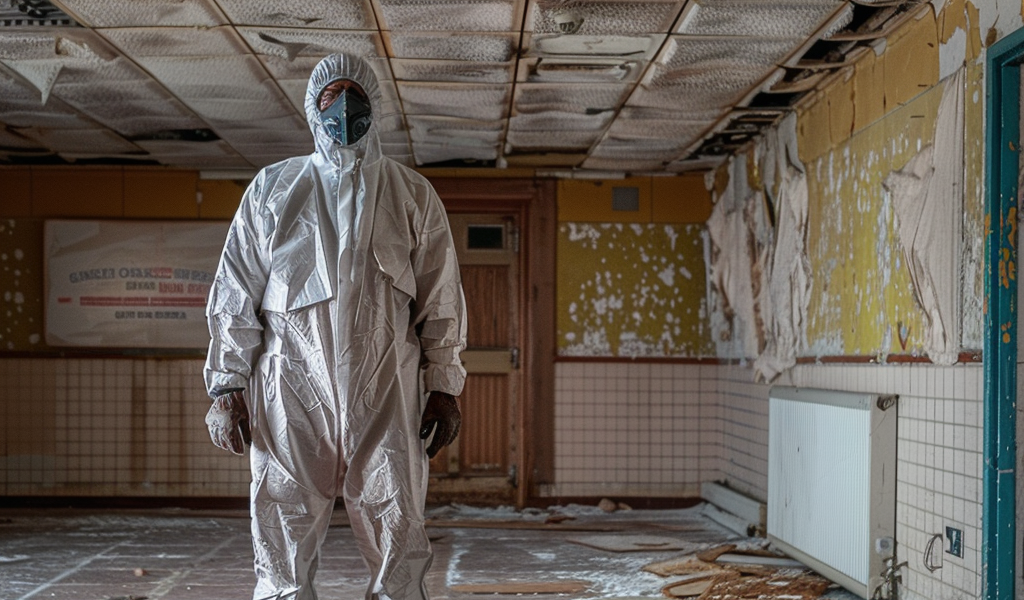The alarming rise in asbestos-related health issues in the UK has sparked urgent calls for action, as experts warn of a looming crisis that could lead to thousands of preventable deaths in the coming decades. A recent report from the Joint Union Asbestos Committee has highlighted the severe risks posed by the presence of asbestos in schools and public buildings, emphasizing the need for comprehensive measures to address this public health threat.
Asbestos, known for its heat and fire-resistant properties, was widely utilized in construction and insulation materials until its ban in the UK in 1999. Despite its prohibition, the legacy of asbestos continues to haunt many public spaces, with the potential for exposure still prevalent in various structures, particularly educational institutions and healthcare facilities.
The report warns that ineffective regulations and a prevailing culture of cost-cutting have left many teachers and students vulnerable to the dangers of asbestos exposure. According to the findings, unless significant steps are taken to remove asbestos from schools and other public buildings, the UK could witness a ‘tsunami’ of asbestos-related deaths, with estimates suggesting that hundreds of thousands of individuals may be affected over the next few decades.
Currently, around 2,400 people die each year in the UK from mesothelioma, a particularly aggressive form of cancer linked to asbestos exposure. This statistic underscores the urgency of the situation, as it becomes increasingly clear that the consequences of past asbestos use are still being felt today.
Experts, including Professor Kevin Blyth of Glasgow University, have voiced their concerns regarding the lack of comprehensive data on the locations of remaining asbestos in public buildings. Blyth expresses disbelief that after years of awareness regarding the hazards of asbestos, there is still no thorough inventory of the structures that harbor this dangerous material. He asserts that tackling the issue of asbestos removal is imperative for public safety.
Asbestos is a naturally occurring mineral that has been used for thousands of years, with its earliest applications dating back to the Stone Age when it was used to reinforce ceramic pots. The mineral is mined from the earth and processed into fine fibers, which can be woven into various materials. The properties that made asbestos desirable for construction—its resistance to heat, fire, and corrosion—are also what make it hazardous when disturbed, as the fibers can become airborne and inhaled, leading to serious health complications.
Given the widespread use of asbestos in the past, it is crucial for property owners, particularly those managing public buildings, to understand where asbestos may still be present. Common locations where asbestos can be found include:
- Insulation materials around pipes, boilers, and ducts
- Ceiling tiles and floor tiles
- Roofing materials
- Textured coatings and spray-on insulation
- Wall cladding and partitions
The challenge lies in the fact that many of these materials may not pose a risk if they remain undisturbed. However, renovations, repairs, or natural deterioration can release harmful fibers into the air, creating a significant health risk for anyone nearby.
In light of these dangers, advocacy groups are calling for a national database to be established, detailing the locations of non-domestic buildings that contain asbestos. Such a resource would empower individuals and organizations to take informed actions regarding their safety and the safety of those who inhabit these spaces. The campaign aims to ensure that all remaining asbestos is removed from public buildings, particularly schools, where children and staff may be at risk.
In addition to the health risks associated with asbestos exposure, there are also legal and financial implications for property owners. Failure to identify and manage asbestos can lead to significant liabilities, including costly lawsuits and fines. As such, property owners are encouraged to conduct thorough asbestos surveys and engage licensed professionals for any necessary removal or remediation work.
As the UK grapples with the legacy of asbestos, it is essential for both government and private sectors to prioritize public health and safety. With proactive measures and increased awareness, it is possible to mitigate the risks posed by this hazardous material and protect future generations from its devastating effects.
In summary, the potential for a surge in asbestos-related deaths in the UK has become a pressing issue that cannot be ignored. The call for comprehensive action, including the removal of asbestos from public buildings and the establishment of a national database, is essential to safeguard the health of the population. Awareness and education about the dangers of asbestos, alongside proper management practices, will play a crucial role in preventing future tragedies linked to this toxic substance.





